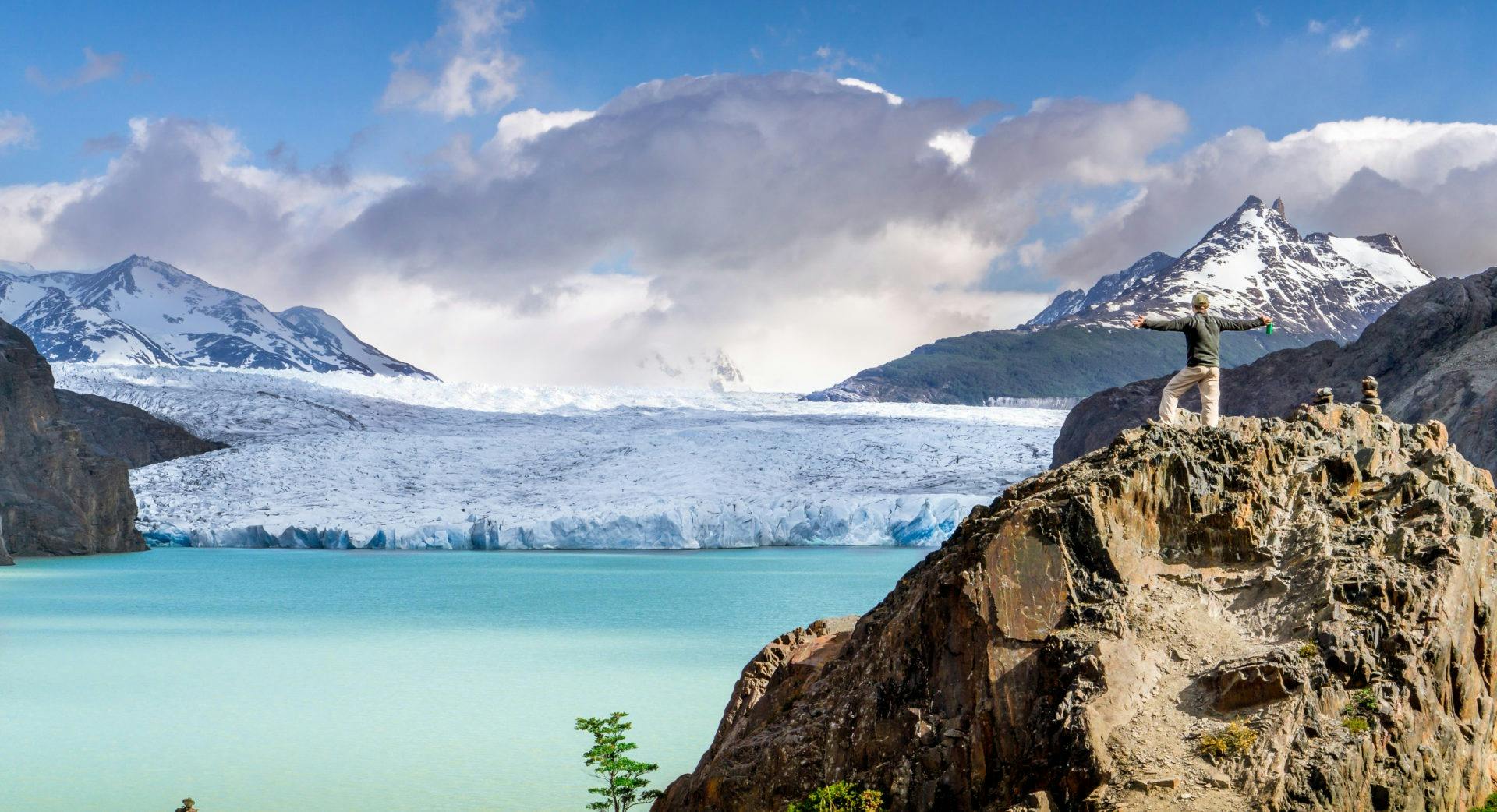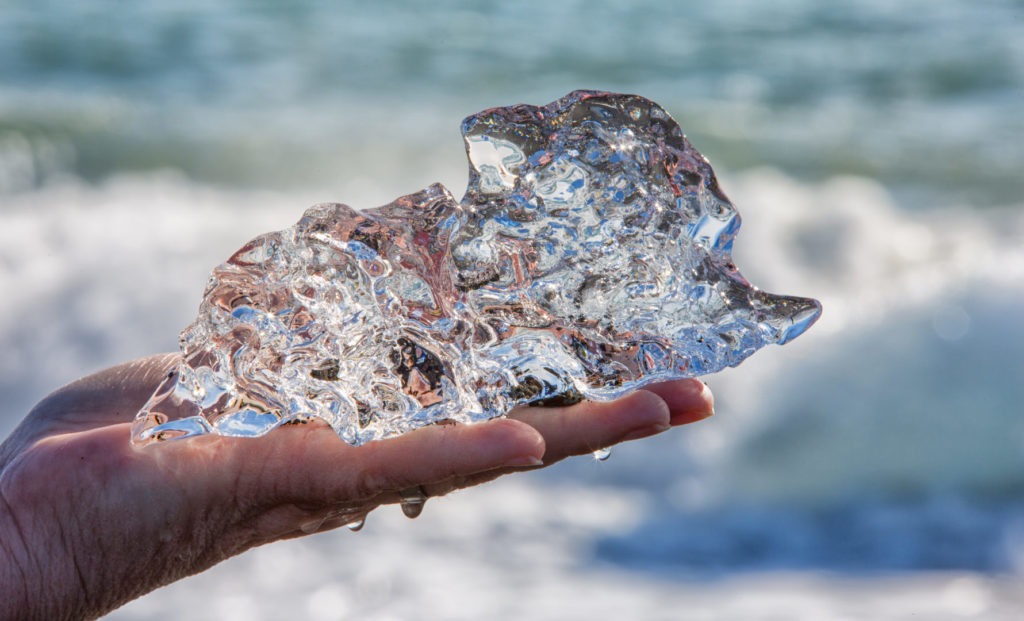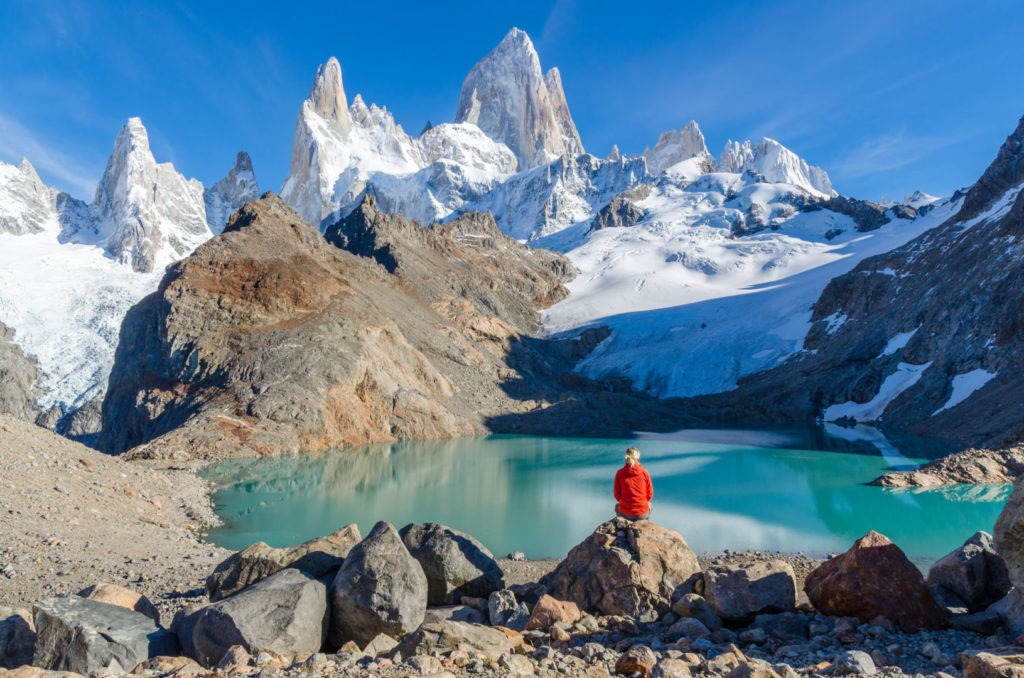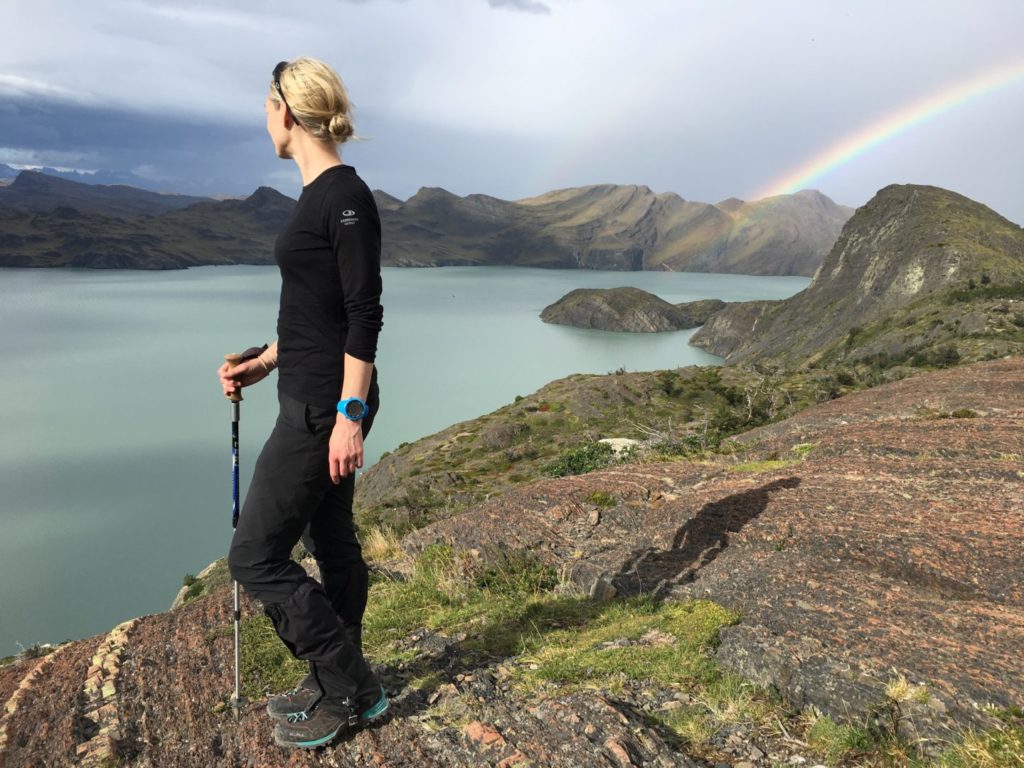- Experiences >
- Destinations >
- Gear >
- About Us >

How to Get a Patagonian Blue Ice Experience
 My eyes were drawn to the translucent blue color of the ice, made all
My eyes were drawn to the translucent blue color of the ice, made all
the more spectacular by the few rays of sunshine that poked out from
between the consistent clouds hugging the surrounding peaks. That was my first Patagonian ‘wow’ moment. The time I realized I didn’t think about deadlines, work or the office and was completely entranced by the beauty of the Patagonian experience. My humbling moment was when I realized I forgot to push record on the GoPro as we arrived at Glacier Grey. Travel isn’t perfect so now we have the memory not the video!
How
The best way to get into Torres Del Paine Park is by bus from Puerto Natales. We used a company called Bus Sur, which was really efficient and had clean and comfortable coaches. The buses fill fast so book online at bussur.com several months ahead if you can. The bus took us to Pudeto jetty where we took a 20-minute catamaran trip to Refugio Paine Grande. The catamaran costs around 20 USD (paid onboard) and can’t be booked in advance.
Remember also to carry enough Chilean Pesos for the cash-only Torres del Paine park entrance fee of 21,000 CLP but if you are like us and didn’t then you can also pay in US dollars.
Allow half a day to get from Puerto Natales to the trek start point at Refugio Paine Grande. The trek to the Refugio Grey is 11km and took us around 3.5 hours. The Glacier Grey lookout where we had the amazing blue ice experience is a well-worth-it 20 minutes further up the track. We were on a tight travel schedule so trekked the 11km back to Refugio Paine Grande for a night in our tent at a reserved camp spot and a delicious well-earned hot meal at the Refugio. This Refugio is popular so book ahead (at least 6 months) or you will probably be disappointed. The booking website is www.verticepatagonia.cl. Another option is to stay at Refugio Grey for those wanting to save their energy or get up early for more blue ice photos with dawn light.
Where
Glacier Grey a 28km long glacier, which flows from the Southern Patagonian Icefield and is located in the Torres del Paine National Park in Chile. It is one of the highlights of the famous ‘W Circuit’ trek, which isn’t actually a circuit at all.
When
We went in February, which is the best month for settled weather in Patagonia and the most popular. Some people prefer the very long day length in December and January but there is plenty of time to explore as the main trekking season goes from October-April.

What
We took warm stuff and plenty of it. It can snow anytime in Patagonia, even in summer. It can also get very windy. The daytime max temperatures we had were around 59F/15C but one night was a chilly 36F/2C. I wore my MacPac hiking pants and light hiking shirt with an Icebreaker merino thermal underneath. This kept me pretty comfy hiking but once the wind got up I had a windstopper jacket and puffer jacket handy for when we stopped. See full gear list here. When I remembered to push ‘record’ I got some beautiful footage with our new Hero6 GoPro and Karma gimbal stabilizer grip even though I’m a newbee with this camera gear!
Ability
Our fitness was above average (just!) but I would say anyone with average fitness and the ability to walk for 4+ hours on a non-technical well-marked wilderness trail would be just fine.
exploreGo Top Tip 

At the end of the day tickle your taste buds with a refreshing drink chilled with a chunk of pure 1,000-year-old blue glacial ice. You’ve earned it!
Written by The Not-So-Hard-Core Adventurer
Hi I’m Megan and I love the wilderness. I live in the adventurer’s playground of Queenstown, New Zealand and feel inspired everyday to get out there and enjoy our beautiful landscape even though I have an office job.

I’m mostly a trekker although my husband tries to encourage me to do more hard-core mountaineering, which is his thing. I meet so many interesting travelers that come to explore my home town of Queenstown, that I often get inspired to travel to explore theirs.